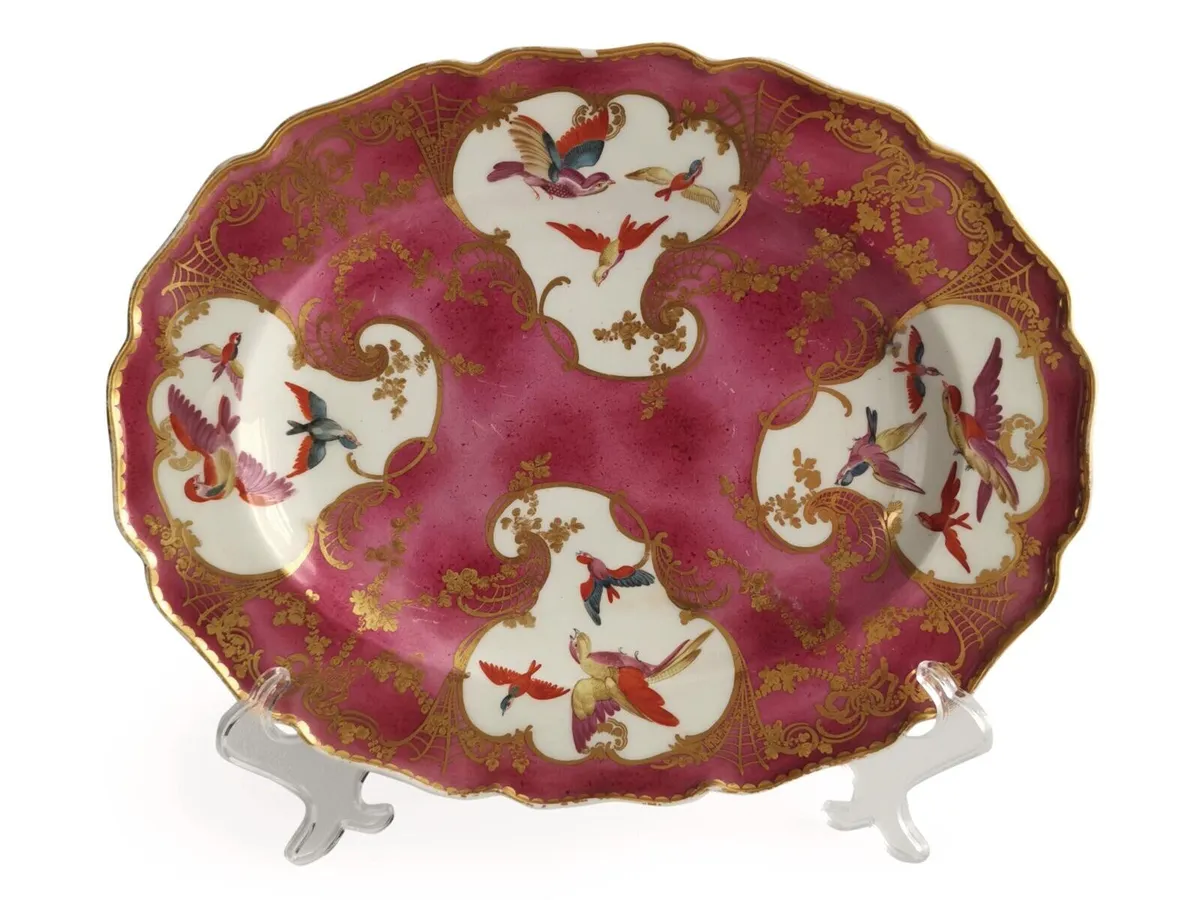Founded in 1744 by enterprising Walloon Huguenot immigrant Nicholas Sprimont, Chelsea was the first (though not the only) well-organised porcelain factory to survive long enough to leave a lasting impression.
Huguenots arriving in England to escape war and persecution brought with them skills such as weaving, lace-making and silversmithing that would prove fundamental to the British Industrial Revolution. Although a talented silversmith, Sprimont looked around this rather crowded landscape and realised he would have to do something novel if he wanted to stand out. Having learned about porcelain in France, he applied his design skills to this new and, at least in England, unexplored medium, and so the Chelsea factory began.
London in those days was a smelly, busy place and, as today, there were wealthy and not so wealthy areas: the fashionable and affluent West End stood directly opposite the gritty, industrial East End. Anyone with money moved west, away from the fumes and the noise in the east.
And the dreamy little village of Chelsea, perched on the banks of the river Thames, was particularly popular. Beautiful houses were being built, attracting the best artisans and artists of the day (JMW Turner lived in a cottage by the river) and if you wanted to serve royals and well-heeled Londoners, Chelsea was the place to be.
Sprimont not only had a brilliant talent for design, he also knew how to fulfil the wishes of an exclusive clientele. Coming from mainland Europe, he had an intimate knowledge of high-quality silver design, which he skilfully translated into purely British ‘soft-paste’ porcelain.
The earliest European porcelain, made at Meissen, had a hard, glassy quality, which was known as hard-paste porcelain (considered the truest form of porcelain), but makers in Saint-Cloud, in France, soon started making a softer version that was easier to work with and fired at a slightly lower temperature. This ‘soft-paste’ porcelain became the standard in Britain, and Sprimont chose to work with it.

Looking at his early wares, you will see beautiful, vulnerable-seeming shapes, sometimes slightly tentative, always graceful. They remind you of silver objects, but also of early French Saint-Cloud porcelain. Meanwhile, decoration was sparing, inspired by Meissen, and consisting of finely painted flowers, bugs and butterflies, or Japanese-style ‘Kakiemon’ prunus branches and rather adorable tigers.
In the mid 1750s, Sprimont went through a bout of illness which paused production for two years; by the time he returned to work, everything had changed. War in Germany meant that Meissen porcelain imports had stopped and fashion had switched to richly decorated Sèvres porcelain from France. When Sprimont failed to convince the British government to block imports of Sèvres, he decided to outdo the competition.

In this later period, Chelsea produced lavish designs in the French style: confident shapes, bright ground colours with rich gilding and exuberant birds. Despite producing products that were, in essence, imitations of European designs, Chelsea’s wares – displaying Sprimont’s unique imagination – created a highly original British taste for porcelain.
Eventually, Sprimont’s health failed and without him as the driving force the factory could not survive. By 1770 it was in the hands of William Duesbury in Derby. Duesbury knew he had bought a gem, so he ran it in tandem with the Derby factory for 14 years. It is hard to distinguish the pieces of this time, known as the ‘Chelsea-Derby’ period, as many of them went through the hands of workers in both locations.
By the time it closed in 1784, the Chelsea factory was making everything a wealthy person needed: dinner sets, tea services, vases, pot pourris and figures. However, as it was all produced by hand, output was low. If Chelsea was exclusive and expensive in its time, it’s even rarer today, so we can expect to pay a premium to own a piece.
Chelsea produced some of the most celebrated porcelain ever made and we owe much to the artistic genius of Sprimont: his gracious, silverwork-inspired shapes helped to determine what would become typically British porcelain designs, and his imaginative use of French and German styles cemented the artistic freedom that would become a hallmark of British porcelain.
